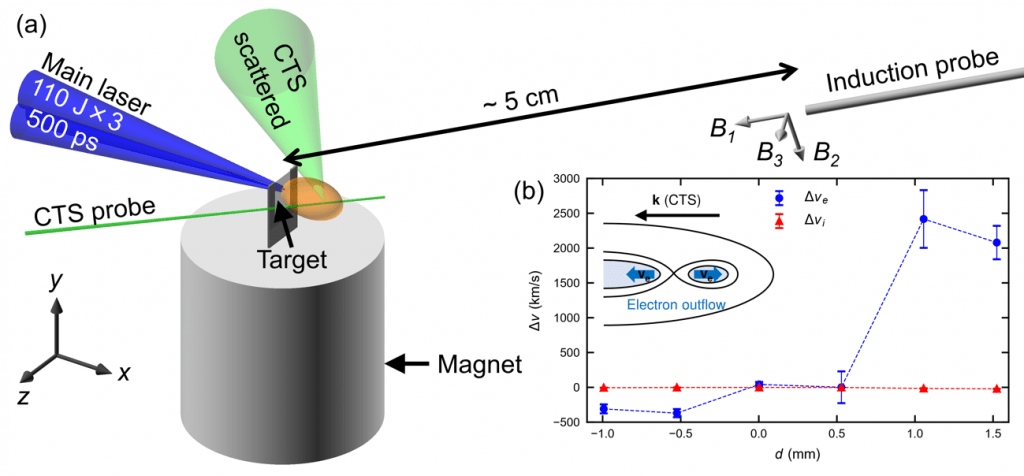Lasers are useful for a lot of things. They made CDs work (when they were still a thing). They also provide hours of entertainment for cats (and their humans).
But they can also create magnetic conditions similar to the surface of the Sun in a lab, according to new research by scientists at Osaka University. And that might help a wide range of other scientific disciplines, ranging from solar astronomy to fusion. The experiment used a high-power laser, known as Gekko XII, at the Institute of Laser Engineering at Osaka University.
Originally designed for fusion experiments, this laser is powerful enough to vaporize a piece of plastic if it is focused on it. Or, more accurately, it is powerful enough to turn it into a plasma. That is just what the researchers did.
They zapped a small piece of plastic with Gekko XII that sat on top of a magnet emitting a weak magnetic field. The laser blast, which only lasted for about 500 picoseconds, created a high-energy plasma that distorts an already weak magnetic field over the sample. That combination of a weak magnetic field and plasma created a situation known as a “pure electron outflow.
” UT video discussing building an artificial magnetosphere. This phenomenon is thought to play a significant role in other, much larger astrophysical phenomena, such as solar flares and magnetic storms on the Sun’s surface. In these larger-scale instances, the electron dynamics of the area create what is known as a magnetic reconnection, where the magnetic field of a feature connects back with the base magnetic connection of the body it is emanating from.
Recreating these features at a small scale in the lab has never been done before, but the researchers at Osaka think that their electron outflow created by the combination of a magnet and the laser-induced plasma might be the closest thing that we will have to being able to study these phenomena on Earth. Scaling down solar physics level phenomena to a more manageable size is undoubtedly a step in the right direction, but pure electron flow is also helpful in other areas. As mentioned above, Gekko was initially designed to work on inertial confinement fusion, which a better understanding of microscopic level electron dynamics might help to control.
Another UT video discussing artificial magnetospheres. Overall, the experiment represents steps forward in understanding fundamental physics and applies to much more macroscale phenomena. It shows that lasers if leveraged correctly, are useful for much more than convincing your dog to run into a wall.
Learn More:Sakai et al – Direct observations of pure electron outflow in magnetic reconnectionOsaka University – Laser creates a miniature magnetosphereUT – An Absolutely Bonkers Plan to Give Mars an Artificial MagnetosphereUT – A Magnetic Bubble Could Protect Astronauts From Dangerous Space Radiation Lead Image:Depiction of the GEKKO XII experiment. Credit – Sakai et al / Osaka University The post Researchers Create a Plasma Bubble With Lasers That Could Provide Propulsion or an Artificial Magnetosphere appeared first on Universe Today. .
From: universetoday
URL: https://www.universetoday.com/156854/researchers-create-a-plasma-bubble-with-lasers-that-could-provide-propulsion-or-an-artificial-magnetosphere/
